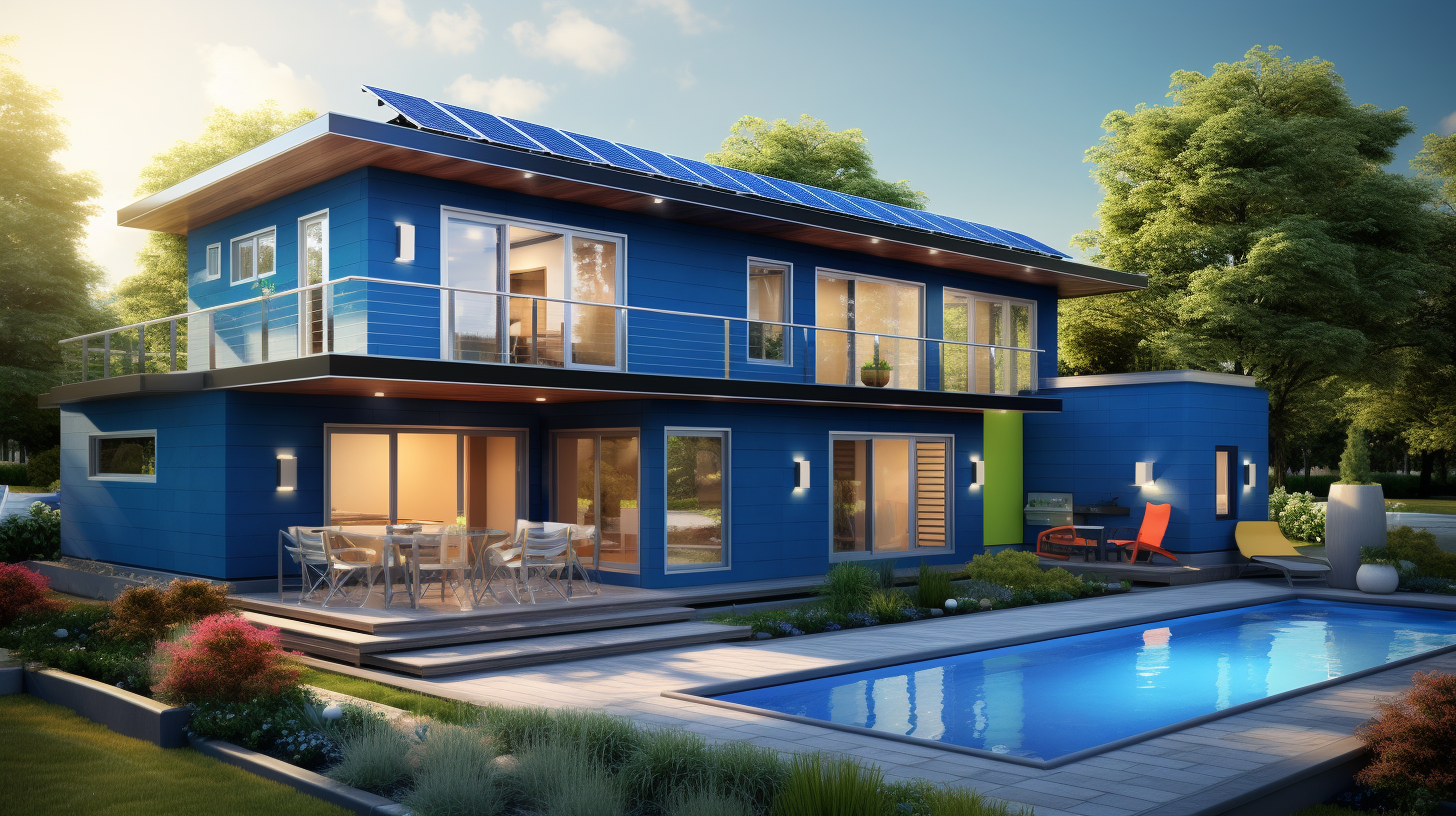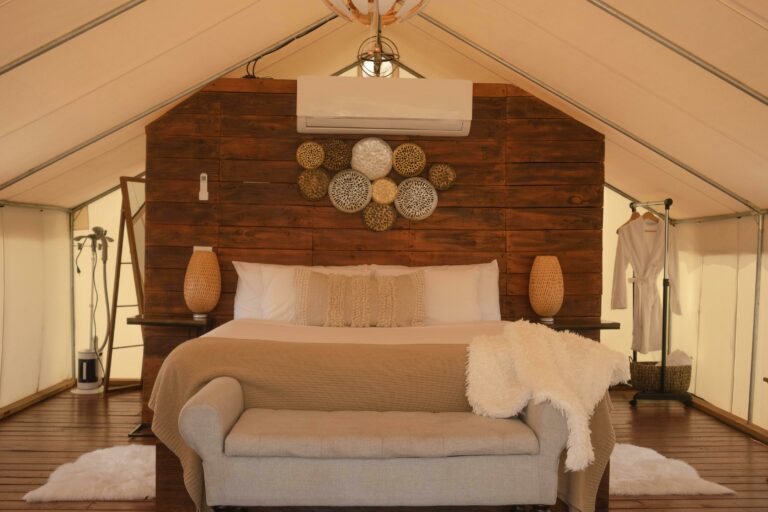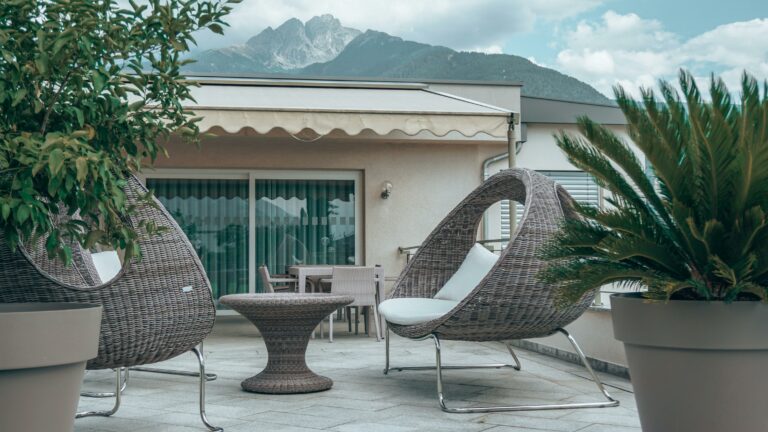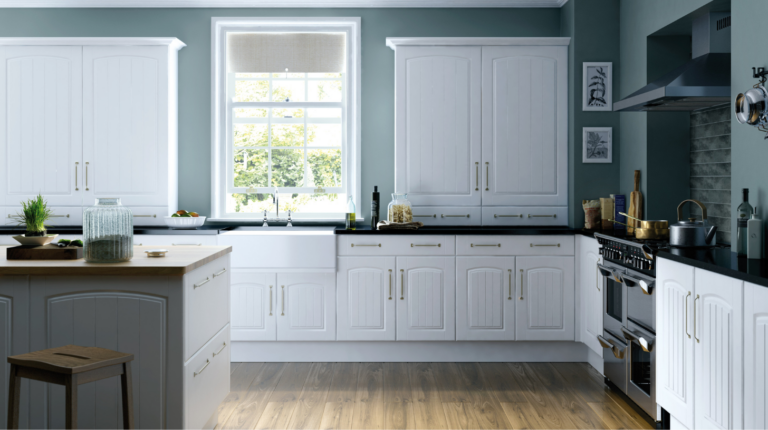Designing a Sustainable Home: Tips for Eco-Friendly Homeowners in 2023
Welcome to the world of sustainable home design! If you’re reading this article, it means you care about the environment and want to make a positive impact through your home. Designing a sustainable home is not only great for the planet, but it also offers numerous benefits to you as a homeowner.
Creating an eco-friendly home involves incorporating renewable energy sources, using green building materials, conserving water, and implementing energy-efficient technologies. It’s about finding the perfect balance between comfort, aesthetics, and sustainability.
Table of Contents
- 0.1 Designing a Sustainable Home in 2023
- 0.2 Choosing a Location
- 0.3 Energy-Efficient Design
- 0.4 Water Conservation
- 0.5 Renewable Energy Sources
- 0.6 Green Building Materials
- 0.7 Waste Reduction and Recycling
- 0.8 Indoor Air Quality
- 0.9 Smart Home Technology
- 0.10 Landscaping and Outdoor Spaces
- 0.11 Financial Incentives and Certifications
- 1 Conclusion
Designing a Sustainable Home in 2023

In this article, we’ll explore various tips and strategies to help you design a sustainable home that minimizes your carbon footprint and maximizes energy efficiency and comfort. From choosing the right location to incorporating smart home technology, we’ll cover all aspects of eco-friendly home design.
But first, let’s take a moment to understand why sustainable home design is essential in today’s world.
“The greatest threat to our planet is the belief that someone else will save it.” – Robert Swan
By creating a sustainable home, you are taking the first step towards a greener future. Here are some reasons why sustainable home design is so important:
- Environmental impact: Traditional homes account for a significant portion of carbon emissions and energy consumption. By adopting sustainable practices, we can reduce our environmental impact and preserve natural resources for future generations.
- Energy efficiency: Sustainable homes are designed to minimize energy consumption, leading to lower energy bills and reduced dependence on fossil fuels.
- Comfort and well-being: Green homes prioritize natural light, ventilation, and the use of non-toxic materials, creating a healthier and more comfortable living environment.
- Financial savings: While sustainable design may require an initial investment, it pays off in the long run through reduced energy costs and potential financial incentives.
- Resale value: As society becomes more aware of environmental issues, the demand for sustainable homes increases. Investing in sustainable design can provide a competitive edge when selling your property in the future.
Now that we understand the importance of sustainable home design, let’s dive into the practical tips and strategies for creating an eco-friendly oasis.
Choosing a Location

When designing a sustainable home, one of the most important factors to consider is the location. The right location can maximize energy efficiency and minimize the environmental impact of your home. Here are some key aspects to consider when choosing a location for your eco-friendly home:
Consider Local Climate and Geography
- Understanding the local climate is crucial when designing a sustainable home. Consider factors such as average temperatures, humidity levels, and rainfall patterns. This information will help you determine the most effective strategies for heating, cooling, and insulation.
- Evaluate the geography of the area to make the most of natural elements. For example, if you live in a windy area, you can position your home to take advantage of natural ventilation. If you live in a hilly area, you can incorporate earth-sheltered design elements to harness the thermal mass of the earth.
Evaluate Sunlight and Wind Patterns
- Maximizing natural light can significantly reduce your reliance on artificial lighting during the day. When choosing a location, consider how the sun moves across the site throughout the day. Position your home to maximize southern exposure, where you’ll get the most sunlight.
- Understanding wind patterns can help you harness natural ventilation. If you live in a region with consistent winds, position your home to allow for cross ventilation. This will help keep your home cool in the summer without relying heavily on air conditioning.
By considering the local climate, geography, sunlight, and wind patterns, you can choose a location that sets the foundation for an energy-efficient and sustainable home. Taking these factors into account during the design phase will allow you to make the most effective choices in terms of building orientation, insulation, and heating/cooling systems.
Energy-Efficient Design

When it comes to designing a sustainable home, one of the key aspects to consider is energy efficiency. By implementing energy-efficient design strategies, you can reduce your energy consumption, lower your carbon footprint, and potentially save money on your energy bills. Here are some tips to help you design an energy-efficient home:
Optimal Building Orientation
- Maximize natural light: Orienting your home to take advantage of natural light can help reduce the need for artificial lighting during the day. Consider positioning windows and skylights strategically to bring in ample natural light.
- Utilize solar heat gain: Design your home to optimize solar heat gain during the colder months. This can be achieved by placing windows and glazed surfaces on the south side of your home to allow sunlight to enter and naturally warm up the interior.
- Minimize heat gain: On the flip side, in warmer climates, it’s essential to minimize heat gain. Using shading devices such as overhangs or pergolas can help block direct sunlight and prevent overheating.
Effective Insulation
- Invest in high-quality insulation: Proper insulation is crucial for maintaining a comfortable indoor temperature and reducing energy waste. Insulate your walls, roof, and floors with materials that have a high insulation value, such as fiberglass, cellulose, or foam insulation.
- Address air leaks: Sealing any gaps or cracks in your home’s envelope can prevent air leakage, which can lead to heat loss or gain. Use weatherstripping and caulking to seal windows, doors, and other areas prone to air leaks.
High-Efficiency Heating and Cooling Systems
- Choose energy-efficient HVAC equipment: When selecting heating and cooling systems for your home, opt for high-efficiency models that are ENERGY STAR certified. These systems are designed to use less energy while still providing optimal comfort.
- Consider geothermal heating and cooling: Geothermal systems utilize the stable temperature of the earth to heat and cool your home. They are highly energy-efficient and can significantly reduce your energy consumption.
- Implement zoning systems: Zoning allows you to control the temperature in different areas of your home independently. By only heating or cooling the occupied areas, you can save energy and increase comfort.
By incorporating these energy-efficient design strategies into your home, you can create a more sustainable living space while reducing your environmental impact. Remember, every little step you take towards energy efficiency adds up and makes a difference.
Water Conservation

Water conservation is an essential aspect of designing a sustainable home. By implementing water-saving strategies, you can minimize your impact on the environment and reduce your water bills. Here are some tips for conserving water in your eco-friendly home:
Low-Flow Fixtures and Appliances
One of the simplest ways to conserve water is by installing low-flow fixtures and appliances. These fixtures reduce the flow rate of water without compromising performance. Consider using low-flow showerheads, faucets, and toilets in your home. By making this small change, you can significantly decrease your water usage.
Rainwater Harvesting
Rainwater harvesting is another effective method for conserving water. By collecting rainwater from your roof, you can use it for various purposes such as watering your plants, washing your car, or even flushing toilets. Installing a rainwater harvesting system can help you reduce your reliance on municipal water supplies and contribute to water conservation.
Drought-Tolerant Landscaping
Creating a drought-tolerant landscape can save a significant amount of water. Instead of planting water-thirsty grass, opt for native plants that are well-adapted to your local climate. These plants require less water and maintenance, making them an eco-friendly choice for your garden. Additionally, consider using mulch to retain moisture in the soil and minimize water evaporation.
Water Conservation is crucial for sustainable living. By implementing strategies like low-flow fixtures, rainwater harvesting, and drought-tolerant landscaping, you can significantly reduce your water consumption and contribute to the preservation of this precious resource in your eco-friendly home.
“We never know the worth of water till the well is dry.” – Thomas Fuller
Renewable Energy Sources

When it comes to designing a sustainable home, incorporating renewable energy sources is a crucial step. By utilizing clean and renewable energy, homeowners can significantly reduce their carbon footprint and decrease their reliance on fossil fuels. Here are some popular renewable energy options to consider for your eco-friendly home:
Solar Power
Harnessing the power of the sun is one of the most common and efficient ways to generate renewable energy. Solar panels, also known as photovoltaic (PV) panels, convert sunlight into electricity. Here are some benefits of installing solar panels:
- Lower electricity bills: Solar panels allow homeowners to generate their own electricity, reducing reliance on the grid and potentially lowering monthly utility bills.
- Reduced carbon emissions: Solar power is clean and produces zero greenhouse gas emissions, helping to combat climate change.
- Long-term savings: While the initial installation cost of solar panels can be high, the long-term financial benefits make it a worthwhile investment. Solar panels have a lifespan of around 25-30 years, providing years of savings on electricity bills.
Wind Power
If you live in a location with strong and consistent wind patterns, installing a wind turbine can be an excellent option for renewable energy generation. Here are a few advantages of wind power:
- Versatile for different locations: Wind turbines can be installed on both rural and urban properties, making them a versatile option for homeowners.
- Low maintenance: Once installed, wind turbines require minimal maintenance and can continue to generate electricity for decades.
- Incentives and rebates: In many regions, governments offer incentives and rebates to homeowners who install wind turbines, helping to offset the initial installation costs.
Geothermal Energy
Geothermal energy utilizes the heat generated beneath the Earth’s surface to provide heating and cooling for residential properties. Here are some benefits of geothermal energy:
- Efficient heating and cooling: Geothermal systems are highly efficient in providing heating and cooling for homes. They can extract stored heat from the ground during winter and transfer heat out of the house during the summer.
- Lower energy consumption: Geothermal systems can significantly reduce energy consumption compared to traditional heating and cooling systems, resulting in lower utility bills.
- Long lifespan: Geothermal systems have a lifespan of around 25-50 years, making them a long-term investment for homeowners.
By incorporating renewable energy sources like solar power, wind power, and geothermal energy into the design of your sustainable home, you can create a truly eco-friendly and energy-efficient living space. Not only will this help you reduce your impact on the environment, but it will also provide long-term cost savings and increase the value of your property. So, go ahead and explore renewable energy options that align with your location and energy needs!
“Renewable energy is the way of the future. By utilizing resources like the sun, wind, and heat from the earth, homeowners can reduce their carbon footprint and save money in the long run.”
Green Building Materials

When designing a sustainable home, one essential aspect to consider is the choice of green building materials. Green building materials are environmentally friendly, renewable, and have a minimal impact on the planet. They not only promote a healthier living environment but also contribute to reducing carbon emissions. Here are some options to consider when selecting green building materials for your eco-friendly home:
Recycled and Reclaimed Materials
Using recycled and reclaimed materials is an excellent way to reduce waste and give new life to existing resources. These materials can come from a variety of sources, such as salvaged wood, recycled bricks, or reclaimed metal. Here are some examples of recycled and reclaimed materials you can incorporate into your home:
- Reclaimed wood: Using reclaimed wood for flooring, furniture, or cabinetry helps reduce deforestation and promotes sustainable forestry practices.
- Recycled glass: Glass can be recycled into countertops, tiles, or decorative elements, reducing the need for raw materials and energy-intensive production processes.
- Recycled metal: Incorporating recycled metal into your home, such as aluminum or steel, helps conserve resources and reduce greenhouse gas emissions.
Sustainably Sourced Wood
Wood is a popular building material, but it’s essential to choose sustainably sourced wood to ensure the long-term health of forests. Look for wood certified by organizations like the Forest Stewardship Council (FSC), which guarantees that the wood comes from responsibly managed forests. Here are some sustainable wood options:
- Bamboo: Bamboo is a fast-growing grass that can be harvested sustainably and used for flooring, cabinets, and furniture.
- Cork: Cork is harvested from the bark of cork oak trees without harming the tree, and it’s an excellent choice for flooring and wall coverings.
- FSC-certified wood: Look for FSC-certified wood products, such as framing lumber or plywood, which come from responsibly managed forests.
Low-VOC Paints and Finishes
Traditional paints and finishes contain volatile organic compounds (VOCs), which can release harmful chemicals into the air, negatively affecting indoor air quality. Opt for low-VOC or zero-VOC paints and finishes to reduce the level of toxins in your home. These products are available in a wide range of colors and finishes and contribute to healthier indoor environments.
In addition to the above options, there are many more green building materials available in the market, including recycled plastic, natural stone, and even insulation made from recycled denim! When choosing materials, look for certifications like Cradle to Cradle or GreenGuard, which ensure the products meet high environmental and health standards.
As a homeowner interested in sustainable living, incorporating green building materials into your home not only benefits the environment but also creates a healthier and more comfortable space for you and your family. So, make informed choices and enjoy the many benefits of a truly green home!
Green building materials are a crucial component of sustainable housing as they help reduce waste, promote environmental conservation, and improve indoor air quality.
Waste Reduction and Recycling

Reducing waste and implementing effective recycling practices are crucial steps in designing a sustainable home. By minimizing the amount of waste we produce and finding creative ways to recycle and reuse materials, we can significantly reduce our environmental impact. Here are some tips on waste reduction and recycling for eco-friendly homeowners:
Composting
- Composting is an excellent way to reduce food waste and create nutrient-rich soil for your garden.
- Set up a compost bin in your backyard and add food scraps, yard waste, and other organic materials.
- Turn the compost regularly to speed up the decomposition process and prevent odors.
- Use the compost in your garden to enrich the soil and reduce the need for chemical fertilizers.
Designated Recycling Areas
- Designate specific areas in your home for recycling, making it easier for everyone in the household to participate.
- Place recycling bins in convenient locations, such as the kitchen, garage, or home office.
- Clearly label each bin for different types of recycling, such as paper, plastic, glass, and metal.
- Educate your family members about the importance of recycling and encourage them to recycle responsibly.
Reducing Single-Use Plastics
- Single-use plastics are a major contributor to pollution and waste. Take steps to reduce your reliance on them.
- Invest in reusable alternatives, such as cloth grocery bags, stainless steel water bottles, and glass food storage containers.
- Avoid using disposable plastic utensils, straws, and plates. Instead, opt for reusable or biodegradable options.
- Buy products with minimal packaging or packaging made from recycled materials.
- Recycle any plastic waste that you do generate, such as product packaging or plastic bags, in designated recycling bins.
By implementing these waste reduction and recycling practices, you can actively contribute to a greener and more sustainable future. Remember, the goal is to not only reduce the amount of waste we produce but also to find ways to reuse and recycle materials whenever possible. As the saying goes, “reduce, reuse, recycle.”
Indoor Air Quality

When designing a sustainable home, one important aspect to consider is indoor air quality. Poor air quality can have detrimental effects on our health, leading to respiratory issues, allergies, and other health problems. By focusing on indoor air quality, you can create a healthier and more comfortable living environment for you and your family. Here are some tips to improve the indoor air quality in your eco-friendly home:
1. Proper Ventilation System
A well-designed ventilation system is crucial for maintaining good indoor air quality. It helps to remove stale air and pollutants, while bringing in fresh, clean air from the outside. Consider installing mechanical ventilation systems, such as energy recovery ventilators (ERVs) or heat recovery ventilators (HRVs), which can also help save energy by recovering heat or coolness from the exchanged air.
2. Natural Cleaning Products
Many conventional cleaning products contain harmful chemicals that can contribute to poor indoor air quality. Switching to natural cleaning products can help reduce the amount of toxins released into the air. Look for cleaning products that are labeled as non-toxic, biodegradable, and free from harmful chemicals like ammonia and chlorine.
3. Air Purifying Plants
Plants not only add beauty to your home, but they also help improve indoor air quality by removing harmful pollutants and releasing oxygen. Some air-purifying plants that are known for their ability to filter toxins include spider plants, peace lilies, and snake plants. Place these plants strategically throughout your home to maximize their air-purifying benefits.
Remember, creating good indoor air quality is not only about avoiding pollutants but also about maintaining proper ventilation and introducing natural elements into your home. By following these tips, you can breathe easier knowing that your sustainable home is providing you with clean and healthy air.
“Indoor air pollution is the fourth greatest risk to human health, according to the U.S. Environmental Protection Agency.” – American Lung Association
Read more about Indoor Air Quality here
Smart Home Technology

In today’s digital age, smart home technology has become increasingly popular among homeowners looking to make their homes more eco-friendly and energy-efficient. With the advancement of technology, it is now easier than ever to control and monitor various aspects of your home’s energy consumption and overall sustainability. From smart thermostats to energy monitoring systems, incorporating smart home technology into your eco-friendly home can have numerous benefits. Let’s dive into the different ways in which you can make your home smarter and more sustainable.
Smart Thermostat
One of the easiest and most effective ways to optimize energy consumption in your home is by installing a smart thermostat. These innovative devices allow you to control your home’s temperature remotely and provide valuable insights into your energy usage. With a smart thermostat, you can:
- Adjust the temperature based on your schedule and preferences, saving energy when you’re away or asleep.
- Receive real-time energy consumption data and customized reports to track and manage your energy usage effectively.
- Integrate with other smart devices in your home, such as lighting systems and appliances, to create smart, energy-saving routines.
Energy Monitoring Systems
Another essential component of a smart and sustainable home is an energy monitoring system. These systems provide detailed information about your home’s energy consumption, helping you identify areas where you can save energy and reduce costs. With an energy monitoring system, you can:
- Monitor real-time energy usage for individual appliances and devices to pinpoint energy-hogging culprits.
- Set energy usage goals and receive alerts when you exceed them.
- Analyze historical energy data to identify trends and make informed decisions about energy-saving measures.
Automated Lighting
Smart lighting systems offer convenience, energy efficiency, and customization options for homeowners. With automated lighting, you can:
- Schedule your lights to turn on and off at specific times, ensuring that they are only being used when needed.
- Adjust the brightness and color temperature of your lights to create the desired ambiance and mood.
- Control your lights remotely through a smartphone app or voice commands, reducing the chances of leaving lights on when not in use.
By integrating smart home technology into your eco-friendly home, you can achieve greater control over your energy consumption, enhance comfort and convenience, and reduce your carbon footprint. With the ability to remotely control and monitor various aspects of your home, smart home technology allows you to make informed decisions to optimize energy usage. So, why not take advantage of these innovations and create a sustainable and smart home?
“Smart home technology allows homeowners to have greater control over their energy consumption, enhancing both sustainability and convenience.”
Landscaping and Outdoor Spaces

When it comes to designing a sustainable home, don’t forget about the importance of landscaping and outdoor spaces. Your choices in this area can have a significant impact on the environment and the overall sustainability of your property. Here are some tips to help you create an eco-friendly outdoor space:
Native Plants and Permaculture
Incorporating native plants into your landscaping is a great way to promote biodiversity and support local ecosystems. Native plants are adapted to the local climate and require less water, fertilizer, and pesticides compared to non-native species. They also provide habitat and food for local wildlife.
Consider implementing permaculture principles in your outdoor design. Permaculture is an ecological design approach that focuses on creating sustainable and self-sufficient systems. By using permaculture techniques such as companion planting, rainwater harvesting, and organic gardening methods, you can create a productive and resilient outdoor space.
Water-Efficient Irrigation
Water conservation should be a priority in your outdoor design. Opt for water-efficient irrigation systems, such as drip irrigation or smart sprinkler systems, that deliver water directly to the roots of your plants with minimal waste. These systems can reduce water usage by up to 50% compared to conventional irrigation methods.
Another way to conserve water is by grouping plants with similar watering needs together. This allows you to water them efficiently without wasting water on plants that don’t require as much moisture. Additionally, consider using mulch around your plants to retain soil moisture and minimize evaporation.
Outdoor Recycling Stations
Make recycling convenient and readily available in your outdoor spaces. Set up dedicated recycling stations that include bins for different materials such as paper, plastic, glass, and metal. Clearly label these bins to ensure proper sorting and recycling.
Consider repurposing outdoor furniture or accessories by using recycled materials. For example, you can create seating areas using recycled pallets or install a pathway made from reclaimed bricks or stones. These small changes can significantly reduce waste and contribute to a more sustainable outdoor space.
By incorporating these landscaping and outdoor design strategies into your sustainable home, you can create a beautiful and eco-friendly environment. Not only will you reduce your environmental footprint, but you’ll also enjoy a more natural and serene outdoor space that benefits both you and the planet.
Financial Incentives and Certifications

When designing a sustainable home, it’s not just about doing your part for the environment. It’s also about saving money in the long run. Fortunately, there are several financial incentives and certifications available that can make your eco-friendly home even more cost-effective. These incentives and certifications can help offset the initial costs of your sustainable home and provide ongoing savings on your energy bills. Here are some of the key financial incentives and certifications to consider:
Tax Credits and Rebates
One of the most significant financial incentives for sustainable homeowners is the availability of tax credits and rebates. These incentives are designed to encourage homeowners to invest in energy-efficient and renewable energy systems. Some examples of tax credits and rebates include:
- Federal Renewable Energy Tax Credit: This credit provides a 30% tax credit for the cost of installing solar panels, wind turbines, and other renewable energy systems. The tax credit is available until 2023, with a gradual decrease in the percentage over time.
- State and Local Incentives: Many states and local municipalities offer their own tax credits and rebates for sustainable home upgrades. These incentives can vary widely but may include credits for solar installations, energy-efficient appliances, and insulation upgrades. Check with your local government or utility company to see what incentives are available in your area.
LEED Certification
LEED (Leadership in Energy and Environmental Design) certification is a globally recognized green building certification program. It provides a framework for assessing the sustainability and environmental performance of a building. LEED-certified homes are designed to be energy efficient, water efficient, and environmentally responsible. Some benefits of achieving LEED certification include:
- Increased Property Value: LEED-certified homes have been shown to have higher resale values and faster sales compared to non-certified homes.
- Lower Operating Costs: LEED-certified homes are designed to be highly energy and water efficient, resulting in lower monthly utility bills.
- Improved Indoor Air Quality: LEED certification considers indoor air quality, ensuring a healthier living environment for you and your family.
Energy Star
Energy Star is a program run by the U.S. Environmental Protection Agency (EPA) that focuses on energy efficiency. Energy Star-certified homes meet strict energy efficiency guidelines set by the EPA. Some benefits of Energy Star certification include:
- Lower Energy Bills: Energy Star-certified homes are designed to be at least 10% more energy efficient than homes built to code, resulting in significant savings on energy bills.
- Increased Comfort: Energy Star-certified homes have better insulation, windows, and HVAC systems, providing improved comfort year-round.
- Reduced Environmental Impact: Energy Star-certified homes help reduce greenhouse gas emissions by using less energy, contributing to a healthier planet.
By taking advantage of these financial incentives and certifications, you can make your sustainable home even more affordable. Not only will you be reducing your carbon footprint, but you’ll also be saving money in the process. So, don’t overlook these opportunities when designing your eco-friendly home. It’s a win-win situation for both your wallet and the environment!
Also read; Unlocking Your Home’s Potential: Tips for Designing the Perfect Space in 2023
Also read; Exterior Design Trends: Enhancing Your Home’s Curb Appeal in 2023
Conclusion
Designing a sustainable home is not only beneficial for the environment but also for your own well-being and financial savings. By implementing eco-friendly practices and utilizing renewable energy sources, you can create a home that is energy-efficient, water-conserving, and environmentally conscious. Here are some key takeaways from this article:
- Location: Choose a location that takes advantage of the local climate and geography, optimizing sunlight and wind patterns.
- Energy-Efficient Design: Optimize your home’s building orientation, invest in effective insulation, and opt for high-efficiency heating and cooling systems.
- Water Conservation: Install low-flow fixtures, harvest rainwater, and incorporate drought-tolerant landscaping.
- Renewable Energy Sources: Consider incorporating solar power, wind power, or geothermal energy into your home’s energy system.
- Green Building Materials: Use recycled and reclaimed materials, sustainable wood, and low-VOC paints and finishes.
- Waste Reduction and Recycling: Implement composting practices, designate recycling areas, and reduce the use of single-use plastics.
- Indoor Air Quality: Ensure proper ventilation, use natural cleaning products, and include air-purifying plants.
- Smart Home Technology: Utilize smart thermostats, energy monitoring systems, and automated lighting to optimize energy usage.
- Landscaping and Outdoor Spaces: Incorporate native plants and permaculture, use water-efficient irrigation, and create outdoor recycling stations.
- Financial Incentives and Certifications: Take advantage of tax credits, rebates, LEED certification, and Energy Star programs.
By incorporating these sustainable design principles into your home, you can make a positive impact on the environment while creating a comfortable and efficient living space. So why not start taking steps towards a greener future? Build a home that not only reflects your style and personality but also minimizes your carbon footprint.
Remember, sustainable living isn’t just limited to your home design. It’s about making conscious choices every day. From using eco-friendly products to reducing waste, every action counts.
Join us at Arkitecture Today for more inspiring ideas and resources on home design, interior decoration, and sustainable living.
Shop sustainable home products at Arkitecture Today
Frequently Asked Questions
- What are some eco-friendly materials that can be used in sustainable home design?Some eco-friendly materials that can be used in sustainable home design include bamboo flooring, recycled glass countertops, reclaimed wood, and low VOC (volatile organic compounds) paint.
- Are there any specific energy-efficient appliances recommended for a sustainable home?Yes, there are several energy-efficient appliances recommended for a sustainable home, such as ENERGY STAR certified refrigerators, dishwashers, washing machines, and LED lighting.
- What are some ways to incorporate natural lighting into a sustainable home?To incorporate natural lighting into a sustainable home, you can install large windows, skylights, or light tubes to allow more sunlight in. Additionally, using light-colored walls and reflective surfaces can help maximize natural lighting.
- How can landscaping contribute to the sustainability of a home?Landscaping can contribute to the sustainability of a home by using native plants that require less water, implementing rainwater harvesting systems, installing a drip irrigation system, and creating a composting area for organic waste.
- What are some tips for reducing water consumption in a sustainable home?To reduce water consumption in a sustainable home, you can install low-flow toilets and showerheads, fix any leaks promptly, collect rainwater for irrigation, and use water-efficient landscaping techniques such as xeriscaping.







